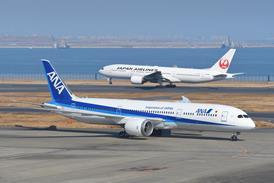Winner: Shen Yuankang
Title Vice Minister of General Administration of Civil Aviation of China
Achievement Helping to strengthen air safety oversight in China's fast-growing civil aviation sector. The improvement in China's levels of air safety has been dramatic over the past three years. The country's civil-aviation regime has undergone a major overhaul, with a sharper focus on safety procedures and oversight within China's fast-growing airline industry.
In particular, the country has ended a spiralling rate of airliner crashes. Over the last three years, China has had one of its best ever spells for air safety.
This 1998 Aerospace Personality of the Year is Shen Yuankang, Vice Minister of the General Administration of Civil Aviation of China, one of the senior regulators who played a key part in helping to underscore the turnaround in Chinese air safety.
Shen himself comes from a strong background in airworthiness and aircraft engineering. After graduating from the Harbin Engineering Institute in 1963, where he majored in engineering, Shen joined the research arm of the then Civil Aviation Administration China (CAAC) analysing airframe structural fatigue and aircraft performance.
After a series of senior postings within the administration, he was appointed Governor of the CAAC Managing Insitute in 1985 and two years later became director of the Airworthiness Department.
His appointment to the post of Vice Minister, in December 1993, came as the industry was at a critical stage and in need of a strengthened airworthiness regime.
The freeing of China's domestic airline market had led to a frenetic burst of activity during the early 1990s. Annual passenger growth rates peaked at over 30%, fuelled by a raft of new carriers and a flood of western-built aircraft into the country.
There were growing concerns among many air-safety experts, however, that the expansion was moving too fast. The fears were fuelled by a series of air accidents, with around a dozen fatal accidents crashes in the early 1990s leading up to the loss of a China Northwest Tupolev Tu-154 in mid-1994.
With the market still expanding rapidly, a serious question mark seemed to hang over whether the accident rate too would continue to grow. Shen and the CAAC set about a concerted programme to ensure that it would not.
One of the first steps was to begin to put a brake on airline growth, including tougher conditions imposed on would-be new entrants. At the same time, work began to tighten up procedures for airline certification and airworthiness issues. The CAAC was itself undergoing a restructuring as it became a full ministerial department. By October 1995, a new Chinese air code had also been put in place, enshrining the new regulatory and procedural effort.
As well as helping towards this internal restructuring, Shen was instrumental in developing relationships with international aviation authorities. In late 1995, the CAAC began a thorough review of operations oversight and safety procedures, working closely with the US Federal Aviation Administration and others. Chinese officials visited the USA to discuss safety regulation and the FAA was invited to send a team to look at China's system of oversight. That resulted in a comprehensive review published in January this year.
Moves have also been made to strengthen relationships and oversight of theChina's growing aerospace industry, including the signing of a bilateral aircraft-certification agreement with the USA.
Most encouraging of all is the fact that these programmes appear to have worked in stemming China's accident rate. The recent crash of a China Southern Boeing 737 in May serves as a reminder that safety can always be improved, but the fact that it was China's first major loss in nearly three years stands as a testiment to the progress that has been made.
Source: Flight International























